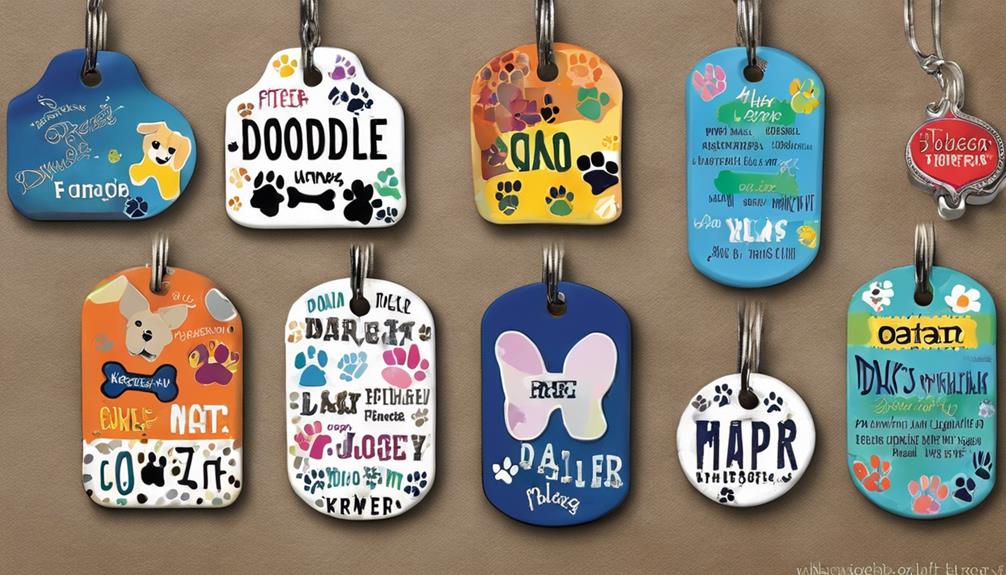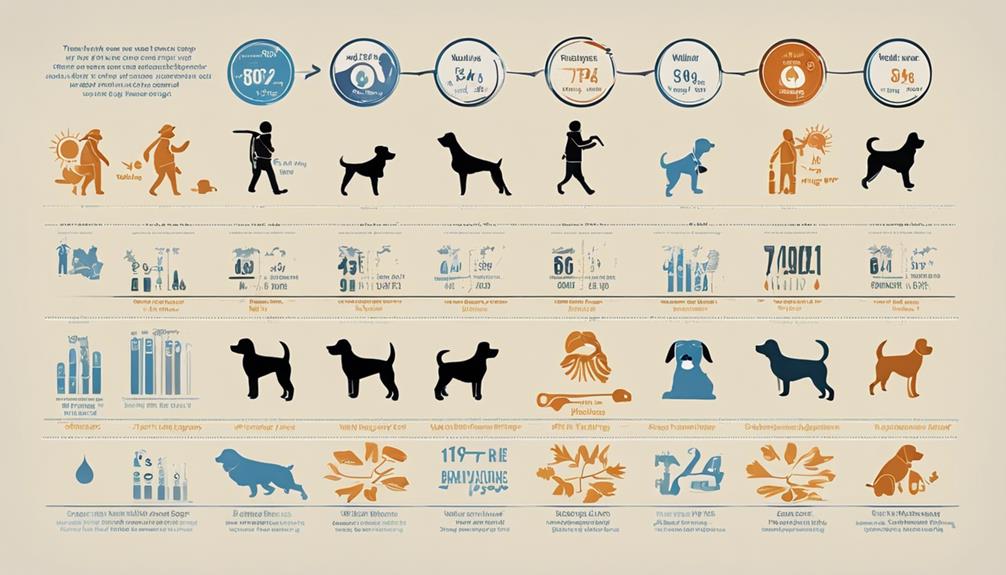Dogs naturally sense Earth’s magnetic field and use it as an internal compass to navigate. They tend to align along the north-south axis and rely on magnetic cues for orientation, especially in unfamiliar areas or low-visibility conditions. This magnetic sensitivity works alongside their other senses, like smell and sight, to help them move accurately through their environment. If you want to discover how this astonishing ability influences your dog’s walks, there’s more to explore.
Key Takeaways
- Dogs instinctively align along Earth’s magnetic north-south axis when stationary, indicating innate magnetic sensitivity.
- Magnetic cues serve as an internal compass, aiding dogs in navigation during complex or unfamiliar environments.
- They integrate magnetic information with visual and scent cues for more accurate spatial orientation.
- Specialized magnetoreceptor cells or biochemical processes are believed to enable dogs’ magnetic perception.
- Recognizing magnetic influences helps explain dogs’ precise navigation and behavior during walks and exploration.

Recent studies suggest that dogs may rely on Earth’s magnetic field to help navigate their environment. This idea opens up a fascinating window into how your canine companion instinctively finds their way, often without you realizing it. Magnetic sensing, the ability to detect Earth’s magnetic field, plays a key role in canine navigation. Researchers have observed that dogs tend to align themselves along the north-south axis when they are resting or standing still, indicating an innate sensitivity to magnetic cues. When you watch your dog walk through a park or navigate around your neighborhood, they might be subconsciously using this magnetic sensing to orient themselves and plan their route.
You might not notice it, but your dog’s navigation skills go beyond just following scents or visual cues. Instead, they seem to integrate magnetic information seamlessly into their sense of direction. This magnetic sensing allows dogs to maintain a sense of spatial orientation even when visual landmarks are scarce or ambiguous. For example, on foggy mornings or in unfamiliar territory, your dog could be using Earth’s magnetic field as an additional navigation tool, helping them stay oriented and find their way back home or toward a familiar scent trail. This ability is especially useful for working dogs or those that explore large areas, as it offers a reliable internal compass that’s unaffected by changing environments.
Dogs use Earth’s magnetic field as an internal compass in foggy or unfamiliar areas.
Understanding canine navigation through magnetic sensing provides insight into how dogs perform complex tasks with remarkable accuracy. It’s not just about smell or sight; it’s about an integrated sensory system that includes magnetic cues. When your dog pauses and faces a specific direction, they might be aligning themselves with Earth’s magnetic field, which helps them determine their position and maintain a sense of direction. This magnetic sensitivity is believed to be linked to specialized magnetoreceptor cells or some form of biochemical reaction that responds to magnetic forces, although scientists are still uncovering the exact mechanisms. Recent research also suggests that this magnetic sense is supported by certain biochemical processes, further demonstrating the complex interplay of sensory information in canine navigation.
In essence, your dog’s ability to navigate using Earth’s magnetic field makes their walks a little more science than simple exploration. It’s a natural, instinctive process that enhances their spatial awareness and helps them interpret their surroundings more accurately. Recognizing this can deepen your appreciation for their navigational skills and the complex sensory world they operate within. So, next time your dog seems to instinctively pick a direction or pause to face a certain way, remember—they might just be tuning into the Earth’s magnetic field to guide themselves through the world.
Frequently Asked Questions
Do All Dog Breeds Navigate Using Magnetic Fields?
Not all dog breeds navigate using magnetic fields, as there are breed differences in this ability. Some breeds may rely more on magnetic cues, while others depend on scent or visual cues. This variation has training implications, as understanding a dog’s natural navigation preferences can help you tailor your approach. Recognizing these differences guarantees you support your dog’s instincts effectively, making training more intuitive and successful.
How Strong Is the Magnetic Field Dogs Detect?
You might wonder about your dog’s magnetic sensitivity and how they detect magnetic fields. Research shows dogs can sense Earth’s magnetic field, which has a field strength of about 25 to 65 microteslas. This sensitivity helps them navigate, especially in unfamiliar environments. While the exact detection mechanism isn’t fully understood, it’s impressive that your dog can pick up on such subtle magnetic cues, aiding their natural orientation skills.
Can Magnetic Navigation Influence a Dog’s Behavior?
Magnetic navigation can influence your dog’s behavior by tapping into their magnetic sense, which helps with canine orientation. When magnetic fields shift, your dog might adjust their movements or become more alert, even if they aren’t consciously aware of the change. This natural ability guides them during walks or in unfamiliar environments, showing how magnetic cues subtly shape their actions and overall navigation skills.
Do Dogs Rely on Magnetic Fields Indoors or Outdoors?
You might wonder if dogs rely on magnetic fields for navigation, whether indoors or outdoors. The answer is intriguing—research suggests dogs possess magnetic sensitivity, helping them orient even inside. While outdoor navigation often involves visual cues, inside, their magnetic sense could be a hidden guide. This subtle ability might influence their behavior, making you realize that your furry friend’s sense of direction extends beyond what meets the eye.
Is Magnetic Navigation Affected by Weather Conditions?
You might wonder if weather impact and magnetic field variability affect a dog’s ability to navigate magnetically. While magnetic field variability can influence navigation, weather conditions like thunderstorms or heavy rain generally don’t disrupt a dog’s magnetic sense. However, extreme weather might cause subtle changes, making navigation less precise. Overall, dogs seem resilient, maintaining their magnetic navigation abilities despite weather impact, but slight effects could occur during severe conditions.
Conclusion
So, next time you take your dog for a walk, remember—while you’re admiring the scenery, your furry friend might be subtly tuned into Earth’s magnetic field. It’s a quiet, unseen guide that helps them navigate, contrasting their instinctive ability with our reliance on sight and smell. Their world is wired differently, yet somehow more connected to the planet beneath their paws. It’s a reminder that nature’s mysteries often work quietly in the background, guiding even our most familiar companions.









